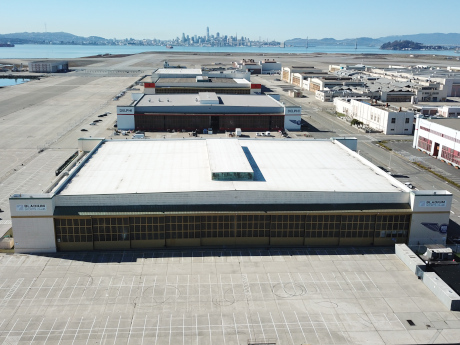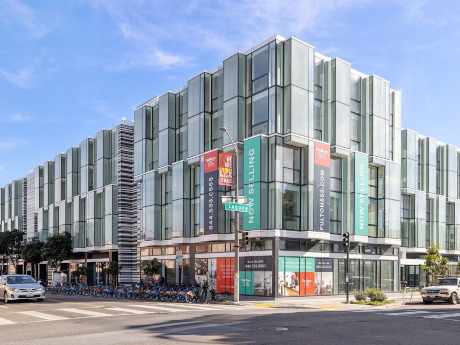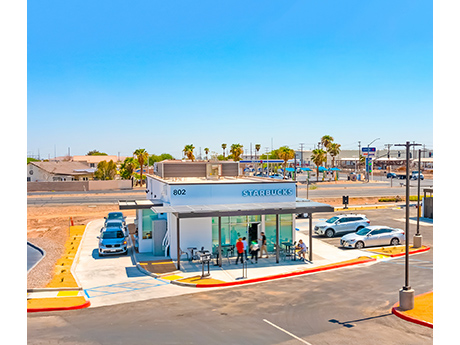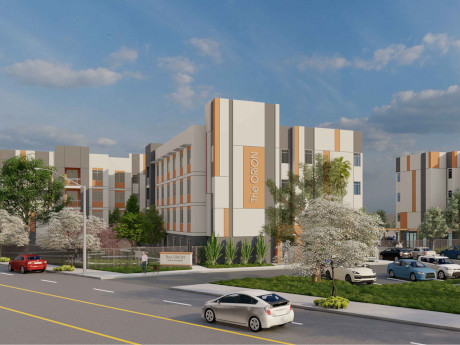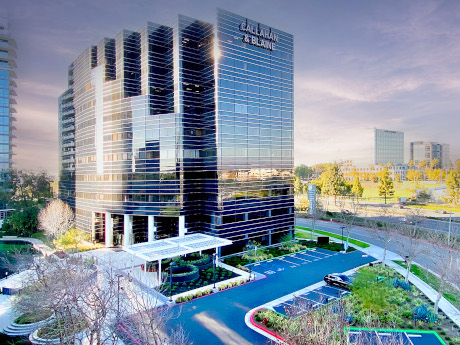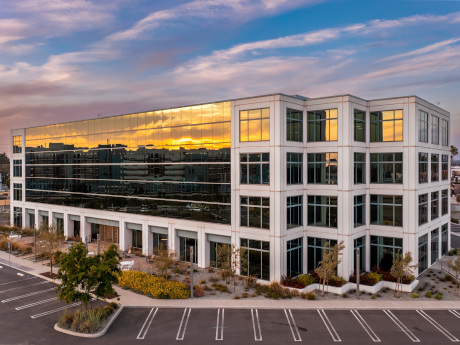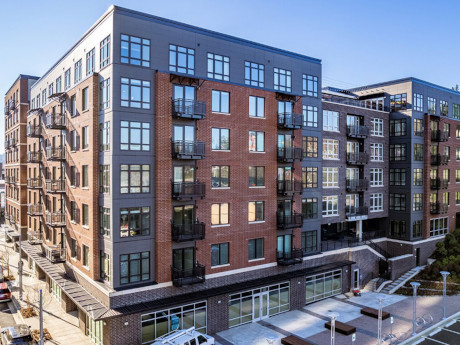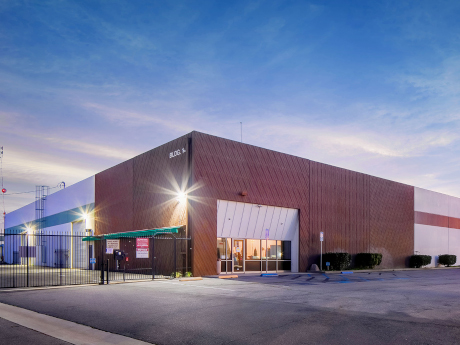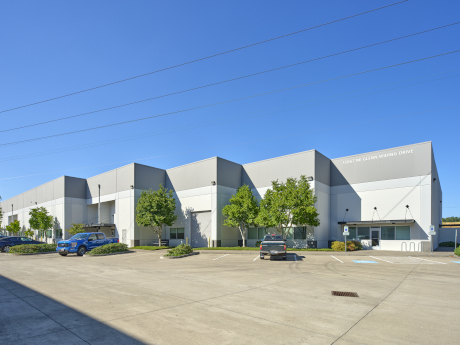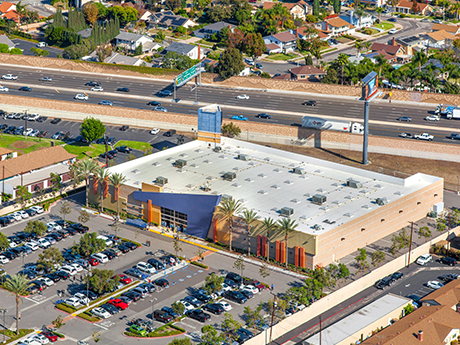— By David Nelson, regional president of brokerage for Northern California and Nevada, Kidder Mathews — After record figures across most U.S. industrial markets in 2021 and 2022, key fundamentals cooled in 2023 and have been recalibrating ever since. Total net absorption has been negative in recent quarters, sublease space is on the rise, vacancy and availability rates have been steadily inching up, and average asking lease rates are relatively flat. Furthermore, the recent surge in development activity due to the rise in ecommerce penetration has been slowly drying up with construction starts dropping by more than 60 percent in 2023 and 2024. Core industrial markets in the Bay Area experienced notable increases in both vacancy and availability. Silicon Valley vacancy rose from between 1.5 percent and 2.5 percent last year to 3 percent and 4 percent in 2024. Meanwhile, East Bay rose from 3.5 percent and 4 percent in 2023 to 5.5 percent and 6.5 percent in second-quarter 2024. During the first half of the year, an increase in sublease space has been a major contributor to the higher rates. They have increased from the pre-COVID average of 9 percent of total available space to 19 percent at the end …
Western Market Reports
— By Kazuko Morgan, executive vice chair; Alanna Joy Loeffler, managing director, business strategy and development, Americas retail services; and Soany Gunawan, senior research analyst, San Francisco retail research, Cushman & Wakefield — Over the past few years, the headline narrative surrounding San Francisco has focused on store closures, complex governance issues and city challenges. However, with one of the highest U.S. household incomes, a rising population count and the lowest unemployment rate in California, the city remains a beacon of opportunity, innovation and creativity. Within the urban retail market, San Francisco continues to demonstrate resilience and growth with a host of new brands, products and services arriving and thriving. Retail sales in San Francisco have continued to increase, climbing an estimated 5.7 percent year over year to $37.1 billion in the second quarter of 2024. A multitude of exciting brands and new concepts are opening, flourishing or expanding. INGKA has launched its first-ever food hall, Saluhall, a 23,000-square-foot, plant-forward culinary project connected to the IKEA store at 945 Market Street. This addition not only creates jobs but enriches the community with regular events, highlighting local food vendors while offering fun and educational cooking classes. MillerKnoll’s modern furnishings brand Design Within Reach …
— By Matt Davis — Imperial County is deeply intertwined with agriculture, experiencing significant growth in both farmable acreage and the value of its agricultural outputs. The region has had a 20 percent increase in the number of farms, a 40 percent expansion in farmed acreage and a nearly 65 percent rise in the market value of agricultural products sold over the past five years. However, agriculture is not the only growing industry in the Valley. It will also soon be recognized for its lithium extraction and geothermal energy production, as well as its role as a strategic logistics hub. As newer industry sectors continue to grow and evolve in the region, their demand for land will also increase. Fortunately, Imperial County boasts ample available land to meet these needs. Investor interest in Imperial Valley land has surged as agricultural areas — despite continued growth — are increasingly transitioning to higher and better uses in key areas of the Valley. From Farming To Energy Forward-thinking investors and developers have begun to purchase and reposition legacy agricultural land to support emerging lithium mining operations in northern Imperial County and logistics users near the Calexico-East port of entry in the south. They …
— By Pat Swanson — Orange County’s multifamily housing market is still facing challenges. These include rising operating expenses, such as escalating insurance costs and new regulatory standards like SB 721. However, I am optimistic that the county will experience a soft landing compared to other parts of the country. Inflationary pressures and stringent rent control measures in areas like Santa Ana have heightened financial burdens for property owners, impacting profitability and investment decisions. Investors are increasingly favoring higher-quality, long-term assets in premier coastal locations like Newport Beach where properties have shown robust rent growth, averaging 5 percent annually over the past five years. Our team of multifamily advisors works closely with clients to navigate this evolving landscape, emphasizing opportunities in high-demand, flight-to-quality assets. Seller-carry financing and loan assumptions have emerged as highly sought-after options, appealing to buyers seeking reduced upfront costs and flexible financing terms, while allowing sellers to maximize property value without heavy down payment requirements. There is pent-up demand in Orange County’s multifamily housing market, particularly for properties in the right areas. Our expertise lies in identifying and leveraging these opportunities for our clients. By understanding the nuances of market demand and regulatory changes, we can help …
— By Nellie Day — Employers all over the nation are looking for ways to bring employees back into the office. In many cases, it’s been a large ask, as employees have adapted to the work-from-home environment and its perceived perks. One of the biggest strategies employers have undertaken is creating an enticing environment where employees want to be. This can include intriguing office spaces, useful amenities, opportunities for socializing and beautiful outdoor spaces. This strategy can go even further when local businesses and municipalities work together. Such is the case with South Coast Metro Alliance, a non-profit corporation of Orange County, Calif.-based property owners and major businesses that have a long-term investment in the area through ownership and/or long-term leases. The economic development organization, which encompasses north Costa Mesa and south Santa Ana, has worked to ensure employers are proud of the spaces they can offer their employees — and that, in turn, employees are excited to return to the office. WREB spoke to Diane Pritchett, executive director of the South Coast Metro Alliance, to discuss the specific strategies employed by businesses and the South Coast Metro Alliance to reactive the local office environment. WREB: How has the introduction …
— By Marty Pupil — The Orange County office sector continues to battle through the early stages of a market turnaround as tenants adapt to new workplace strategies while balancing employee retention and company production. The market is beginning to thaw, however, as more tenants make decisions on their office space requirements, creating opportunities for tenant activity. Net absorption was negative at the onset of 2024, totaling 338,100 square feet. South County experienced the highest amount of move-outs at 199,002 square feet, followed by the Airport Area with 171,171 square feet. Central County, North County and West County submarkets combined for positive absorption of 32,073 square feet. Right now, positive absorption shows up in pockets of the market and can vary by submarket and quarter. Positive absorption for the overall market will become sustainable when new leasing activity reaches levels that are high enough to compensate for givebacks. Total vacancy in the first quarter rose 20 basis points quarter over quarter to 18.1 percent from 17.9 percent, while increasing year over year from 18 percent. Despite this, current vacancy remains well above the pre-pandemic 10-year average of 13.9 percent. For perspective, vacancy peaked at 19.2 percent during the financial crisis …
— By Josh McDonald, Executive Vice President, CBRE’s Institutional Multifamily Investment Services — Recent data points to positive trends in Portland’s multifamily leasing market heading into the summer months. The rebound in absorption and declining new supply — primarily driven by an active suburban renter base — highlight the resilience and growth potential of the local rental market. The positive leasing trends in Portland have contributed to create an increase in recent investment sales opportunities. Strong leasing performance, as indicated by elevated absorption rates and demand for rental properties, often translates into positive investor sentiment and heightened investment activity in the multifamily sector. This may signal to investors that the market has opportunities for solid returns and growth potential. The green shoots in seasonal leasing are weighted in the suburbs with demand accounting for more than 65 percent of the net change in occupied units, emphasizing a strong preference for suburban living. With more than 3,100 units absorbed in 2024 already, the year is on track to surpass the full-year totals for both 2022 and 2023. This may potentially exceeding the 10-year average as well, according to CoStar. Denser urban areas and the Central Business District also experienced an increase …
Orange County Industrial Sector Experiences Leasing Slowdown, but Investment Remains Active
by Jeff Shaw
— By Erick Parulan — The Orange County industrial market, along with Los Angeles and the Inland Empire, is experiencing a general decline in leasing activity as it navigates the post-pandemic landscape. Tenant demand and leasing have significantly slowed as occupiers adopt a more cautious approach to expansion, with some occupiers deciding to downsize and consolidate their industrial footprints. Tenant occupancies continue to contract in the second quarter, with manufacturers, retailers and 3PL (third-party logistics) companies shedding unused space that may have been acquired during the pandemic frenzy, further increasing sublet availabilities. Orange County sublet availabilities surpassed 3.3 million square feet in the second quarter of 2024, raising total availabilities to 9.5 percent for the quarter. While pandemic-driven rental rates hit historic highs, they have since cooled amid softening demand. Many landlords now offer increased free rent concessions to attract new tenants. Average asking lease rates have been on the decline in Orange County over the past two quarters. They decreased by 5.2 percent from the prior quarter, reaching $1.64 per square foot in second-quarter 2024. High market rents previously deterred many occupiers, but with rents on the decline, some tenants have adopted a wait-and-see approach to see where rates …
— By Gabe Schnitzer, Vice President of Industrial Properties, Norris & Stevens — Portland and Southwest Washington possess a total industrial real estate market of 233 million square feet. Portland is frequently praised as the most affordable city on the West Coast, offering lower average home prices compared to its northern and southern counterparts, while providing a high quality of life for its residents. From 2017 to 2022, Portland’s average annual industrial sales volume was $810 million, with institutional funds accounting for 20 percent of the total sales volume during that time. This represented the highest average industrial volume for the city, with early 2022 boasting nearly $1.4 billion in total sales volume. Then Portland experienced its wake-up call. Ill-conceived legislation, poor leadership and damaging national media coverage caused the city’s reputation to decline. This, in turn, led to a significant drop in the city’s industrial sales volume. From 2022 to 2023, the volume fell by almost $500 million. Despite hopes of stabilization in 2024, sales volume dropped further by nearly $150 million. While some of this decline can be attributed to interest rates and other macroeconomic factors beyond Portland’s control, the impact on institutional investors has been severe. Their …
— By John R. Read — Orange County’s retail market continues to shine, mirroring its famously consistent weather. Despite challenges like persistent interest rate fluctuations, capital markets volatility and signs of a slowing economy, the region remains a beacon for retailers and investors alike. This resilience has cemented Orange County as one of the strongest retail markets in Southern California and the nation. As 2023 drew to a close, a notable drop in the 10-year U.S. Treasury yield to below 4 percent and signals from the Federal Reserve of potential rate cuts in the upcoming year fueled optimism among real estate investors. However, 2024 has continued to see volatility, with yields reaching mid-4 percent levels and no rate cuts yet implemented. This environment has impacted Orange County’s retail investment sales volume, which saw a 29 percent drop in 2023 from the prior five-year averages and a muted start in 2024. Despite this, investor demand and pricing have remained strong due to Orange County’s high barriers to entry, with average cap rates in the mid-5 percent range and several significant transactions highlighting the market this year. This includes the April sale of an El Pollo Loco in Orange for $3.8 million …


